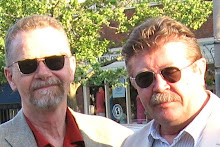
THEATRE REVIEW:
RICHARD III
3 JUN/11
JOHN COULBOURN,
QMI Agency
Rating: 3.5 out of 5
STRATFORD - In acting circles, William Shakespeare’s RICHARD III always has been known for the plum roles it offers the fairer sex — a good thing for a portion of the acting community that, to put it bluntly, has not always been well served by the Bard and his work. But in theatre, good can always be better.
And now, in addition to meaty and memorable roles such as mad Queen Margaret, the ill-fated Lady Anne, the tragic Queen Elizabeth and the dowager Duchess of York, the Stratford Festival has conspired to add the name of Richard himself to the roster of roles open to actresses of demonstrated talent.
As Seana McKenna has proved in roles that range across the classical and contemporary canons, she is one talented actress, a perfect choice to bring life to a new vision of cross-gender casting once limited to males turning Lady Bracknell into a drag. That’s precisely what McKenna does in a much-anticipated Stratford Festival production of RICHARD III, which opened Thursday on the stage of the Tom Patterson Theatre. She is the leading lady cast in the role of the leading man.
For the record, this is perhaps not as groundbreaking as it might seem at first blush, for there is a tradition that stretches back to Sarah Bernhardt and beyond of women playing at least the gentler and more youthful male roles in Shakespeare’s canon, in much the same way as young men originally played all the female roles. But roles such as the evil Richard, it has long been assumed, were simply too evil, perhaps too masculine, for the fairer sex. Females in classical theatre aren’t evil to begin with; they’re driven to it, in roles such as Lady Macbeth and Medea.
It doesn’t take long in a production helmed by director Miles Potter, however, for McKenna to demonstrate that Richard’s evil is most certainly not beyond her reach. Wearing a bedraggled bald-wig, she shoulders Richard’s hump and proceeds to wreak havoc in the court of Richard’s brother, the ailing Edward IV (played by David Ferry). Arrayed in men’s clothing, McKenna aims for, and achieves, not so much a sense of malevolent and twisted masculinity as a trollish, spiteful, almost child-like androgyny that proves effectively chilling, especially in the early scenes. As the competent but largely unimaginative production wears on, however, it becomes evident that Potter has allowed McKenna to become entrapped in an emotional cul de sac that reduces her acting options to merely more of the same, rather than opening up a field in which she can give Richard’s ambition and madness free rein.
And, frankly, she gets little help from the rest of this extensive cast, save for, ironically, those cast in the traditional female roles. While there’s impressive work from Wayne Best as the ambitious Duke of Buckingham and a smirking Sean Arbuckle as the evil Sir William Catesby, the likes of Michael Spencer-Davis, Nigel Bennett, Dion Johnstone, Oliver Becker, Shane Carty, Andrew Gillies and Gareth Potter simply tromp through the show as if they were merely interchangeable players in a military tattoo.
Which leaves the most memorable moments, not surprisingly, in the hands of Martha Henry as Queen Margaret, and in those of Yanna McIntosh and Roberta Maxwell cast, respectively, as Queen Elizabeth and the Duchess of York. Sadly, as Lady Anne, the usually impressive Bethany Jillard reduces what should be a keystone role to a tedious demonstration of proper Shakespearian enunciation and diction.
For her part, McKenna ultimately demonstrates more than enough steel to prove this to be far more than mere stunt casting. But given a magnificent production, instead of this fancy-dress war horse designed by Peter Hartwell, and placed in the hands of a director of sweeping vision, she could have created impressive proof that true talent knows no gender.




No comments:
Post a Comment